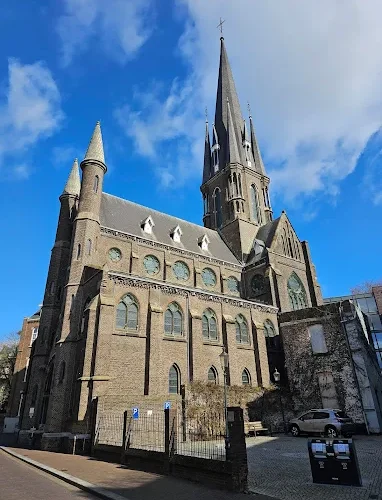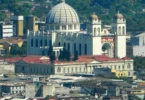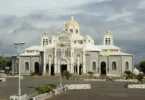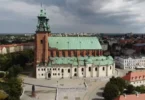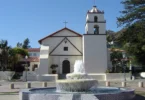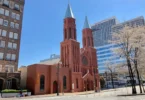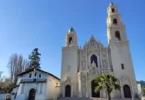Introduction
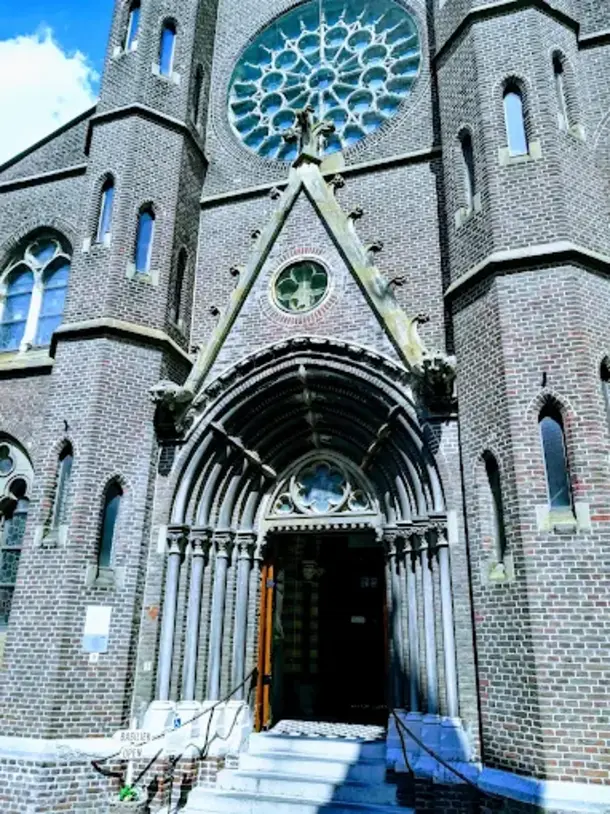
The Basilica of Our Lady of the Sacred Heart of Jesus (Dutch: Basiliek van Onze-Lieve-Vrouw van het Heilig Hart) is a Roman Catholic church located in the heart of Sittard, Limburg. Situated on the Old Market Square between the Dominican and Ursuline monasteries, this historic church is a prominent religious and cultural landmark. Recognized as a minor basilica, it is an important destination for both pilgrims and tourists, reflecting the rich spiritual and architectural heritage of the region. Serving as a vibrant place of worship, the basilica continues to inspire devotion and community, while also being celebrated for its cultural and historical significance.
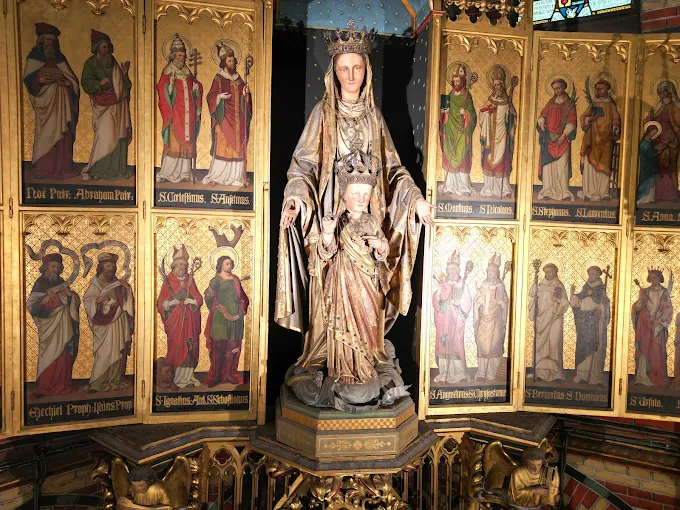
The Basilica of Our Lady of the Sacred Heart of Jesus was founded to serve as a center for the Sacred Heart Devotion, a movement that began in Sittard in 1867. This devotion, which focuses on the worship of the physical heart of Jesus as a symbol of his divine love for humanity, rapidly gained traction, leading to a demand for a larger and more suitable church to accommodate the growing number of faithful followers. Prior to the construction of the basilica, the Ursuline Monastery chapel in Sittard had served as the primary location for the devotion. However, as the number of devotees grew, it became clear that the chapel was far too small to serve the needs of the community. Recognizing this need, plans were made to build a new, larger church. The construction of the basilica was made possible by the generosity of donors from across the Netherlands. The project was supported by both local residents and Catholics nationwide, reflecting the widespread devotion to the Sacred Heart and the church’s growing significance in the region.
The official laying of the first stone took place on 2 June 1875, marking the beginning of the basilica’s construction. The marble stone used in the foundation was a significant and meaningful gift: it was donated by Pope Pius IX and was sourced from the Catacombs of Saint Calixtus in Rome. This stone symbolized the connection between the local church in Sittard and the broader Catholic Church, adding a sense of sacred importance to the building process. The construction of the church was completed in 1877, a remarkable achievement in just two years. Following the completion, the basilica was consecrated on 5 July 1879 by Joannes Paredis, the Bishop of Roermond. This event marked the official opening of the church as a place of worship and solidified its role as a center for the Sacred Heart Devotion in Sittard. In recognition of its growing importance and spiritual significance, the church was granted the title of basilica minor in 1883 by Pope Leo XIII. This made it the first basilica in the Netherlands to receive this esteemed designation. The title of basilica minor is given to churches that hold special significance due to their historical, spiritual, or architectural importance, and it further elevated the church’s status as a pilgrimage destination for Catholics. Over time, the Basilica of Our Lady of the Sacred Heart of Jesus has become not only a religious focal point but also a symbol of the deep devotion to the Sacred Heart in Sittard and the surrounding region. Through the generosity of donors, the leadership of the local church, and the spiritual devotion of its community, the basilica remains a significant place of worship and a beacon of faith in the city’s historic center.
Architecture of Basilica of Our Lady of the Sacred Heart, Sittard, Netherlands
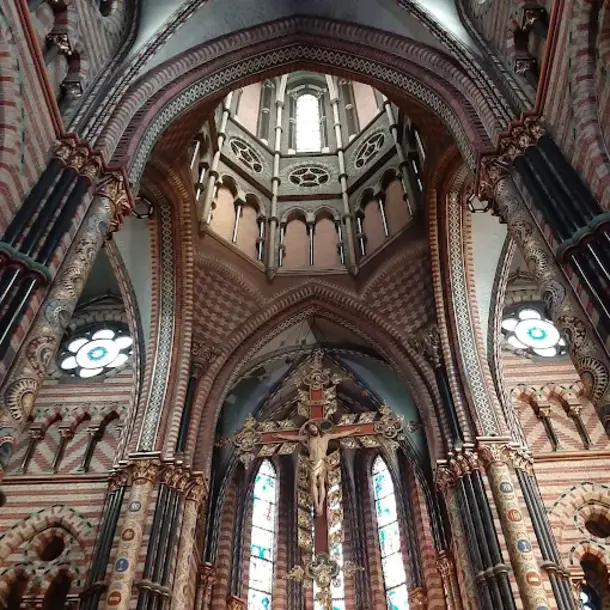
Architect : Johannes Kayser
Architectural Style : Neo-Gothic architecture
Architectural Design and Influence
The Basilica of Our Lady of the Sacred Heart in Sittard was commissioned in 1873, with architect Johannes Kayser entrusted with its design. Kayser, who trained under Pierre Cuypers, one of the most influential neo-Gothic architects in the Netherlands, created a design that blended early Gothic principles with contemporary interpretations. His plans were based on an earlier draft by Dean F.X. Rutten, but Kayser’s second design ultimately defined the church’s structure. The neo-Gothic style chosen by Kayser is heavily influenced by his mentor Cuypers, as seen in similar architectural features present in the Posthoornkerk in Amsterdam and the Munsterkerk in Roermond. In 1892, Kayser also designed the Mariapark directly opposite the basilica, reflecting the North German brick Gothic style that marked his later career.
Exterior Features
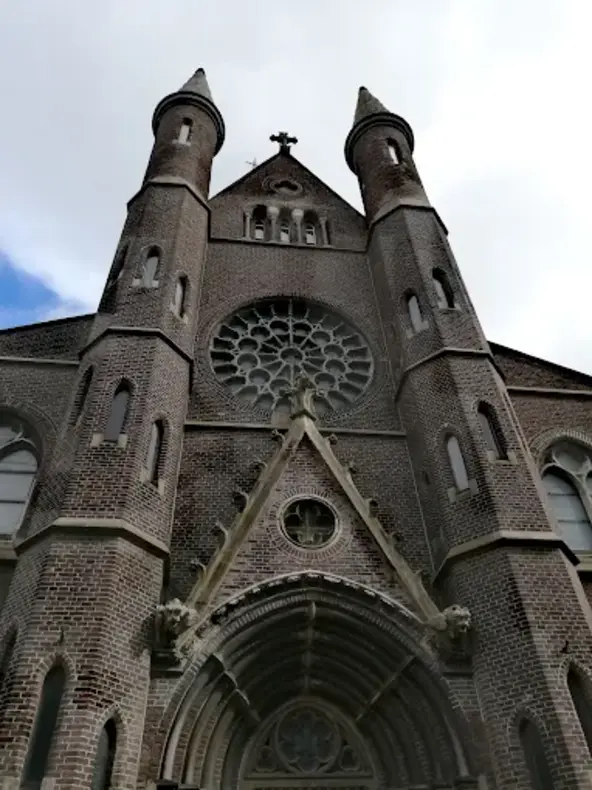
The basilica is constructed in the cruciform basilica format. This means it has a high central nave (clerestory) with lower side aisles and a prominent transept separating the nave from the choir. The absence of a traditional west tower is notable; instead, a large octagonal crossing tower with flanking turrets rises above the center of the church, inspired by the medieval towers of Laon Cathedral in France. The front façade is flanked by polygonal stair towers, giving the entrance a fortified, vertical appearance. At the rear of the church, the exterior wall is lined with hundreds of glazed votive stones, representing prayers and devotions left by pilgrims over time. The choir is completed by an ambulatory with radiating chapels, a feature reminiscent of the Gothic design of Reims Cathedral.
Interior Features
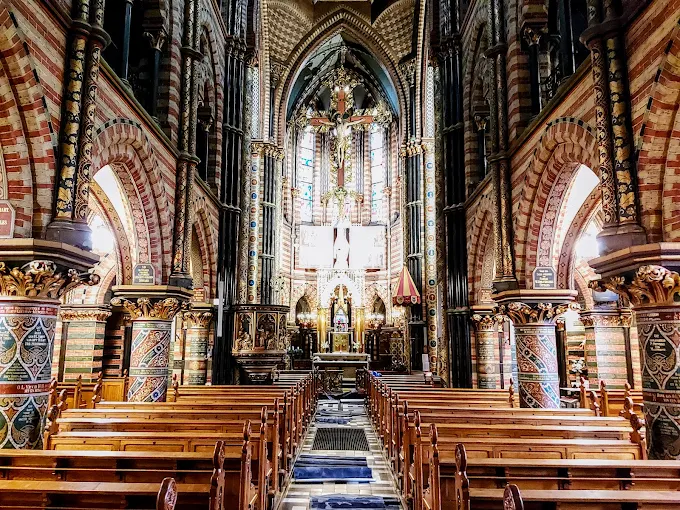
The interior layout also draws inspiration from Laon Cathedral, known for its transitional Romanesque-Gothic features. A distinctive characteristic of the basilica is the presence of galleries above the side aisles, which make effective use of the available space—another architectural decision modeled on Laon. These galleries enhance both the acoustics and spatial functionality of the church. Throughout the interior, detailed stained glass, devotional altars, and Gothic ornamentation create a sacred atmosphere. The basilica’s walls, especially toward the rear, are marked by hundreds of votive stones, serving as both decoration and living testimony to the faith and prayers of generations.
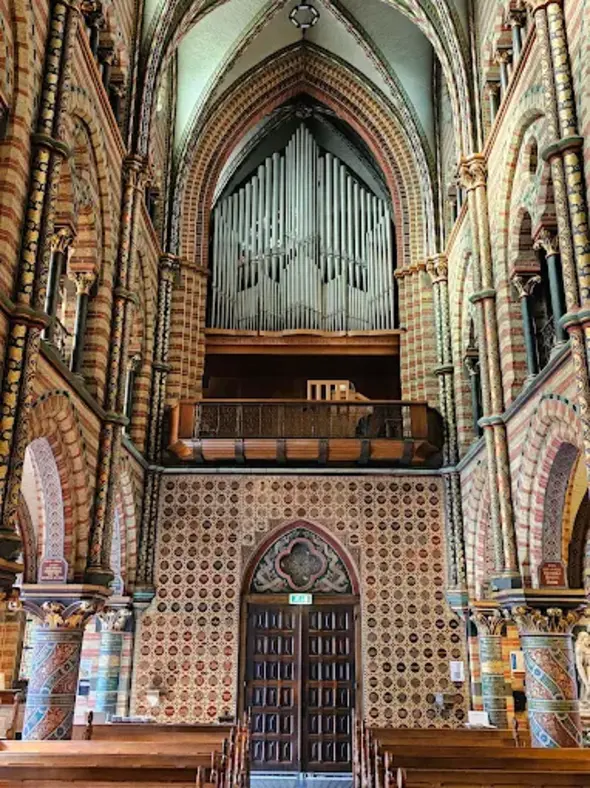
General Information and Coat of Arms
The basilica is located at Oude Markt 3 in the heart of Sittard, situated between two historic religious institutions: the Dominican Monastery and the Ursuline Monastery. Though not a parish church, the basilica is actively used for worship and is serviced by priests from the collaborating parishes of Sittard. It is governed by the Archconfraternity of Our Lady of the Sacred Heart, which was instrumental in its foundation and continues to oversee its spiritual mission. Following its elevation to the status of basilica minor in 1883 by Pope Leo XIII, the church was granted the right to bear its own coat of arms. This was formally recognized by the High Council of Nobility on 15 January 1991. The basilica’s coat of arms includes a cross derived from the heraldic emblem of the city of Sittard, symbolizing the close bond between the basilica and the local community. The building is officially recognized as a national monument, highlighting its architectural, historical, and religious significance in the Netherlands.
Feast Day
Feast Day : 31 May
The Basilica of Our Lady of the Sacred Heart in Sittard, Netherlands, is dedicated to Our Lady of the Sacred Heart. Its feast day is celebrated on the last Saturday of May each year. In 2025, this will fall on May 31. This devotion, which began in 1866, has deep historical roots in the region and is marked by a special celebration in the basilica, attracting both local pilgrims and visitors.
Church Mass Timing
Monday & Sunday : 09:30AM
Tuesday, Wednesday & Friday : 03:00PM
Thursday : 10:30 AM
Church Opening Time
Monday : Closed
Tuesday to Friday : 10:00 am – 12:00 pm., 2:00 pm – 4:00 pm
Saturday : 9:00 am – 12:00 pm., 2:00 pm – 4:00 pm
Sunday : 2:00 pm – 4:00 pm
Contact Info
Address : Basilica of Our Lady of the Sacred Heart
Oude Markt 3, 6131 EN Sittard, Netherlands
Phone : +31 46 451 5141
Accommodations
Connectivities
Airway
Basilica of Our Lady of the Sacred Heart, Sittard, Netherlands, to Maastricht Aachen Airport Vliegveldweg, distance between 20 min (16.5 km) via A2.
Railway
Basilica of Our Lady of the Sacred Heart, Sittard, Netherlands, to Spaubeek Railway Station, distance between 18 min (10.2 km) via Rijksweg Zuid.

